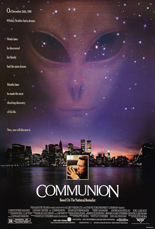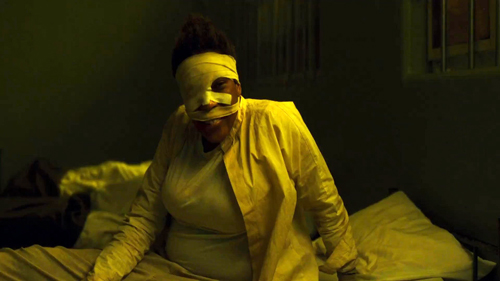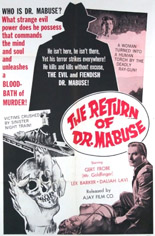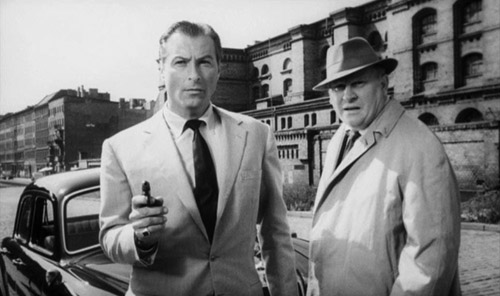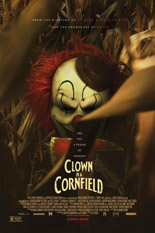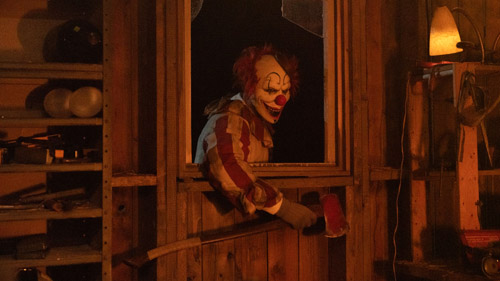
As played by Christopher Walken in the film Communion, with nary a Jesus cracker in sight, Whitley Strieber tries to write the Great American Novel. Because Strieber is a real-life author of The Wolfen and The Hunger, we know he won’t. But he does write the book Communion, the work of nonfiction — 😉 😉 — that ultimately will take his career to the stars.
Why? The answer’s in the butt, Bob. No Walken film is more Walken, for reasons that shall become apparent.
At a post-Christmas weekend visit to the family cabin from their NYC apartment, Whitley endures a sweaty nightmare of being visited by gray-skinned, big-eyed aliens from outer space. After returning home, his wife (Lindsay Crouse, The Arrival) notices he’s just not himself anymore — and for good reason, which surfaces under hypnosis by Misery’s Frances Sternhagen: That was no dream. And following that logic, that means the anal probe … gulp!
This causes a fissure in his rectum marriage, which may be for the best, considering the missus has a fashion sense I’d dub “Annie Hall meets Carmen Sandiego.”

The first glimpse we’re afforded of the alien is merely partial — and wholly terrifying. This bodes well for Communion. But as Whitley’s obsessions and breakdowns increasingly unhinge him from reality, Walken goes full Walken, and so does the movie! From the director’s chair, Philippe Mora (Howling II and III) approaches lucidity more liberally than his star tackles diction.
I don’t quite know how to convey the odd-as-a-$3-bill nature of Whitley’s experiences on the aliens’ ship. He parties with them in a pilgrim hat. They hang in a steam room. He high-fives an E.T. and then dances. I realize these sound like scenes from a stoner comedy where Seth Rogen might blow aliens’ minds with bong-hit lessons and, in exchange, they infuse his with, like, algebra and shit.
Seriously, these too-close encounters of the WTF kind feel as though Mora and Strieber (who adapted his own bestseller for the screenplay) are just fucking with us to see if we’re willing to swallow. I am not.
In fact, I’d steal Whitley’s ominous threat to public transit riders — “Let me tell you, you folks are in for a big surprise, one very big surprise” — and throw it right back at this maladroit movie, aiming to knock that goddamn pilgrim hat into a galaxy far, far away. That’s more action than the third section gives, and still no Jesus crackers. —Rod Lott

